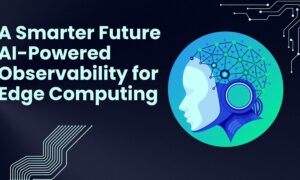According to Gartner’s prediction, 75% of all enterprise data will be created and processed at the edge by 2025. Not only that, 57% of decision-makers say that edge computing is on their roadmap for the future. This means that more and more businesses will jump on the computing bandwagon but even those who don’t are planning to do so in the near future. Edge computing is a rapidly growing field that involves bringing computing power and data storage closer to the edge of networks, rather than relying on VPS Singapore and cloud computing. This decentralized approach has a number of benefits, including reduced latency, improved security, and better scalability.
You can reap all these benefits if you know which trends will be hot and which ones will go cold in 2023. That is exactly what we will discuss in this article. In this article, we will explore seven edge computing trends that you can’t afford to ignore in 2023.
7 edge computing trends you should keep an eye on in 2023
1. The emergence of Edge-Native Applications
As edge computing becomes more widespread, we are likely to see a growth in companies designing edge data centers specifically to support edge computing applications and services. These “edge-native” applications will be designed to run on edge servers and devices, rather than relying on centralized servers in the cloud. This will enable new types of applications and services that require low latency and high reliability, such as real-time video and virtual reality.
2. Welcome to the world of edge data centers
One of the key challenges of edge computing is building and maintaining the infrastructure needed to support it. This includes edge servers and devices, as well as the networks and data centers that connect them. As this technology becomes more widespread, we are likely to see the growth of edge data centers, which will be specifically designed to support edge computing applications and services. These data centers will be smaller and more distributed than traditional data centers and will be located closer to the edge of networks.
3. Edge goes open source
Open-source technologies will play a critical role in the development and deployment of edge computing systems. Technologies like Best Dedicated Server will enable developers to build and test edge computing applications and services and will facilitate the creation of open and interoperable edge computing ecosystems. In addition, open-source technologies will enable companies and organizations to customize and extend edge computing systems too.
Another technology that will play a crucial role in the edge computing revolution will be Kubernetes. Yes, you might be wondering what Kubernetes has to do with edge and you are not alone. Most people consider Kubernetes as a way to work with clusters of containers but they don’t realize that it is also an integral part of edge computing as well. Streamlining multi-tier architectures and platforms takes the pain out of the whole process.
As edge computing goes mainstream and new use cases and applications emerge, we will see Kubernetes playing an even bigger role. It not only helps you simplify complex infrastructure but also assists your business in doing it on a consistent basis.
4. 5G networks become a reality
One of the biggest trends in edge computing is the widespread deployment of 5G networks. These ultra-fast networks will enable a whole new range of applications and services, including self-driving cars, remote healthcare, and augmented reality. As 5G networks become more widespread, edge computing will become increasingly important in order to process and analyze the vast amounts of data generated by these applications.
5. Internet of things (IoT)
Homes, businesses, and other settings are deploying a vast network of connected devices, sensors, and other smart devices known as the Internet of Things (IoT). These devices produce massive amounts of data that require real-time processing and analysis. Edge computing is well-suited to this task, as it allows data to be processed closer to the source, reducing latency and improving the speed and reliability of IoT applications.
6. Artificial intelligence and machine learning
Artificial intelligence (AI) and machine learning (ML) are becoming increasingly important in edge computing, as they enable devices and systems to analyze and process data in real time. For example, edge devices equipped with AI and ML algorithms can analyze data from sensors and other sources and take actions based on that data without the need for human intervention. This will enable a wide range of new applications and services, such as predictive maintenance and real-time traffic management.
7. Security and privacy
As edge computing becomes more widespread, it is important to ensure that data is secure and private. It involves protecting data during transmission between edge devices and servers, as well as securing the devices and servers themselves. Additionally, it will be crucial to ensure that users’ privacy is not violated by collecting or using data in unauthorized ways. To address these challenges, we are likely to see the development of new security protocols, cheap dedicated server hosting, and technologies specifically designed for edge computing.
Businesses will have to rethink how they handle data and create a different strategy to secure the edge. Without a well-thought-out strategy, your data created and processed at the edge will be vulnerable to cybersecurity attacks and data breaches. Yes, it might seem far-fetched right now but it is just a matter of time before cyberattackers turn their attention toward the edge.
Summing up
Edge computing is a dynamic and rapidly evolving field, with many emerging trends that are shaping the future of computing infrastructure. From the integration of artificial intelligence and machine learning to the adoption of edge-as-a-service models and the use of 5G networks, it offers a range of benefits for organizations seeking to optimize their computing infrastructure for the growing number of connected devices and data generated at the edge of the network. As the demand for real-time, data-intensive applications continues to grow, it is likely that we will see continued innovation and growth in the field of edge computing in the years to come.



































